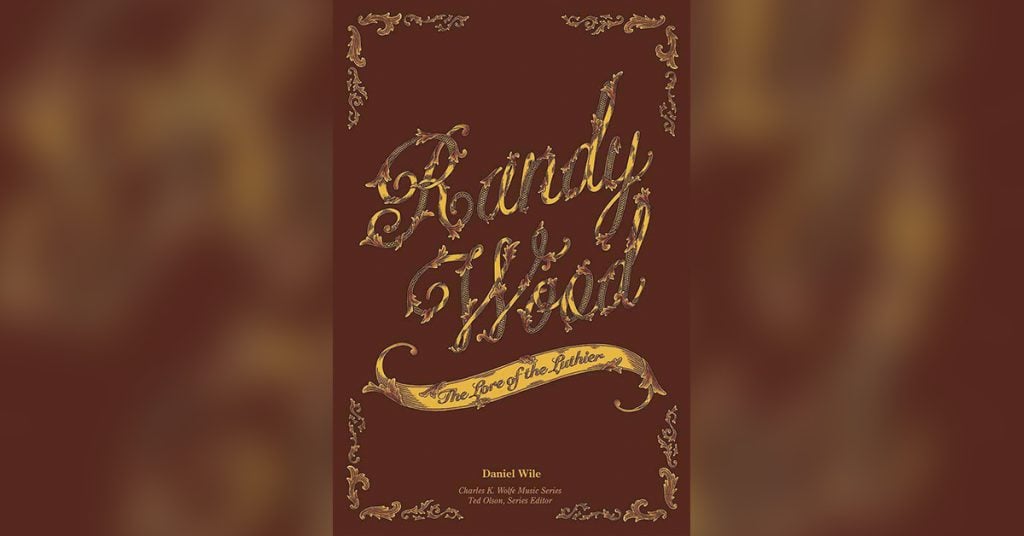Randy Wood: The Lore of Luthier
Daniel Wile
University of Tennessee Press
Randy Wood is the Zelig of bluegrass, a man who has been involved deeply in bluegrass at many of its seminal events, from its earliest stages to the boom era of bluegrass on Nashville’s Broadway, and his current role as one of the legends in vintage instrument repair, restoration, and construction.
With this well-researched, intriguingly insightful biography, Daniel Wile brings the notoriously publicity-shy Wood to life. And unlike some other recent bluegrass biographies, Wile spins an enchanting and compelling story thread that avoids the critical errors of being overly scholarly and worse, making the subject downright boring. A frequent jam player at The Old Time Pickin’ Parlor and denizen of Wood’s luthier shop and its legendary jams, Wile became friends with Wood over the years and gained the firsthand insight into what makes Randy Wood such a seminal figure in bluegrass that permeates this biography.
As Wile shows, Wood created many innovations that changed the course of luthierie and repair. For example, whenever Monroe’s mighty Loar mandolin needed new frets, he routinely sent it to Kalamazoo where they simply replaced the entire fingerboard. Wood repeatedly told Monroe that he could refret his F-5, saving time, materials and money, and have it playing better than ever. Monroe, typically, was resolutely skeptical: No one refretted stringed instruments in those days. But eventually, Monroe relented and found Randy’s workmanship superior to even the Gibson factory employees. And a new, global profession of instrument set-up and repair specialists emerged.
Wile masterfully tells the tale of how Wood hooked up with Tut Taylor and George Gruhn to create the only music store in Nashville focusing on the vintage instruments used by the greats of bluegrass in the 1940s and 1950s. By the 1970s, when Gibson bluegrass instruments were so poorly manufactured that Gruhn acidly refers to them as “stage props,” GTR put great vintage instruments into the hands of great musicians and helped invent the market for vintage bluegrass instruments. Musical greats from Cash to Clapton were frequent customers. But the partnership wavered and each started their own businesses.
And because it focuses so much on that side of Wood’s career, in some ways, this book is titled inaccurately to a degree. True, considerable space is used to tell the tale of Wood’s journey into vintage instrument repair, and then building some of the very first Loar replica F-5s, the third of which went to Big Mon himself. But the book’s not just about Randy Wood’s impact as an instrument luthier. As Wile tells it, Wood’s story here is as much about his efforts to be a successful nightclub owner and the ups and downs of his numerous business pursuits as it is with his instrument repair business.
A major theme here is Wood’s passionate efforts to create and maintain an intimate bluegrass performance space and jamming area in downtown Nashville at The Old Time Pickin’ Parlor. Wile meticulously and objectively shows the huge sacrifices Wood made to try everything possible to keep open that legendary venue, and the mistakes he made as a businessman throughout his career. But when The Opry left the Ryman, lower Broadway descended into a low-rent backwater of sex toy and porn stores, pawn shops, and worse. Not even the determined Wood could survive there.
That’s great if you’re fascinated by Wood’s attempts to franchise the Old Time Pickin’ Parlor, but not so much if you are looking primarily for the lore of the luthier. But if there’s a single thread running through this work, it’s Wood’s ability to survive and change direction when the tides turn against him, whether as builder or businessman.
Well-written and thoroughly researched, Randy Wood: The Lore of the Luthier, provides a comprehensive, entertaining look at a central figure in the development of modern bluegrass. It’s not just a scholarly tome useful to researchers and historians, it’s a great bluegrass read filled with fascinating anecdotes and insights into many of the central figures in bluegrass.

